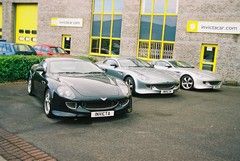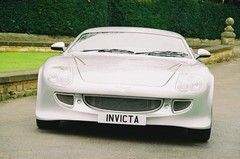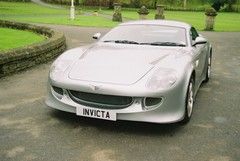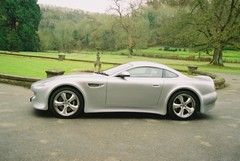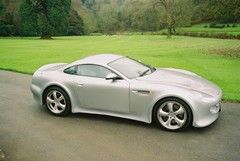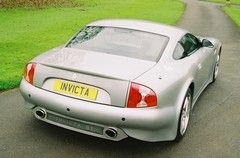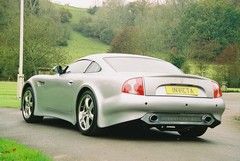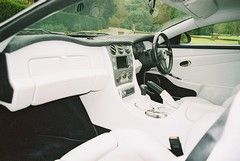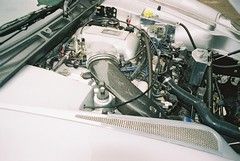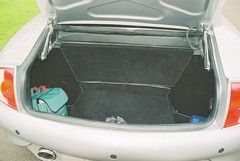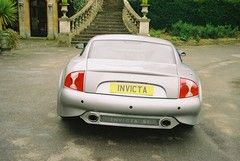Invicta S1
Graham Bell samples this combination of old name and modern technology.
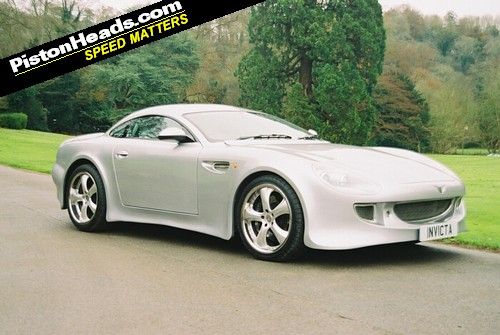
Invicta S1
Over the past few years we’ve seen a flurry of marque revivals, with the names of Arial, Trident, Jensen, Lea-Francis, Spyker, Maybach and Bugatti all having been revived with varying degrees of success.
The ‘Revival King’ though must be Invicta, currently in its fourth separate incarnation. Formed in 1925 by a former racing driver who wanted to create a car with ‘effortless performance’, the original Invicta company produced cars that rivalled the quality of Rolls Royce and the speed of Bentley. As for ‘effortless performance’ – well its 4.5-litre model had so much torque you could drive it from walking pace to around 100mph without changing from top. In the late ‘20s and early ‘30s Invictas notched up numerous wins in racing, hillclimbs and rallying, including Britain’s first win on the Monte Carlo rally.
That was then...
The reason I mention all this is that current Invicta boss Michael Bristow owns one of the 1930s Invictas, and the marque’s current incarnation arose from his desire to build a modern car with the same quality and character.
His design brief for the S1 called for a long-legged GT car with a spacious cabin, large boot and big fuel tank to enable comfortable long distance touring, with rugged construction and the use of well proven mechanical components wherever possible to ensure safety and reliability. Oh, and ‘effortless performance’ of course, which naturally dictated a big engine.
The big engine of choice is Ford’s 4.6 litre Mustang quad-cam V8, which Invicta offers in three power levels – 320bhp, 420bhp (both using the four-valve per cylinder engine) and 600bhp, the latter using a supercharged three valve per cylinder engine. In all cases a 5-speed manual gearbox is standard, with auto an option on the 420 and 6-speed manual available on both the 420 and 600, and there’s a Hydratrak limited slip differential to deal with the power when it reaches the back axle.
Chassis and suspension
As with the original Invictas, the S1 is the product of people with motorsport backgrounds, its chassis and suspension both being the work of designers with a wealth of race car experience and produced very much on race car lines. So the all-round, unequal length double wishbone suspension not only has adjustable coil-over dampers but even offers the facility to adjust camber, castor and anti-roll bar settings.
And the steel spaceframe chassis -- TIG welded on a jig that’s accurate to just six thousands of an inch end to end and three thousandths side to side -- incorporates a full roll cage. The result is extremely accurate suspension mounting on what specialist car consultants Status said was the strongest chassis it's ever tested, race cars included.
However, the S1 doesn’t just get its strength from this but also from the carbon fibre bodyshell and floor/bulkhead sections, with Invicta using an innovative sandwich floorpan comprising separate mouldings bonded to both the top and bottom of the chassis with sound deadening material between. This allows a completely flat underside which improves aerodynamics and works with a rising rear undertray to generate downforce.
The one-piece bodyshell weighs just 25kg and uses a new type of carbon fibre that only requires curing in a low bake oven rather than the traditional autoclave. Once cured, the body is bonded to the chassis/floorpan assembly to create an extremely strong semi-monocoque construction, and with a set back engine and fuel tank mounted over the back axle it offers sizeable impact protection zones front and rear.
If the worst does happen, Invicta’s carbon fibre moulding method means that any accident damage will be very localised and can even be cut out and repaired by having a replacement section bonded in much like a GRP body.
Styling and interior
When it came to styling the body, Leigh Adams was handed a stack of information and photos detailing original Invictas and given the task of clothing the chassis with a modern looking body that encapsulated the Invicta ethos. The end result seems to divide opinion, but it’s certainly an imposing beast, not least due to the sheer width of the thing (6’ 6”!) and one that attracted several admirers at the photo-shoot.
It might not look like it from that low roofline, but the S1’s 2-seater cabin (2+2 under development) has enough room to comfortably accommodate occupants of 6’ 8” in those heated Recaro seats. And thanks to a wide range of seat adjustment including height, as well as steering that adjusts for reach and rake, it’ll comfortably accommodate smaller sizes too. There’s a slight problem with the massive transmission hump leaving no space alongside the clutch pedal, so there’s no room to stretch your left leg - though in that respect it’s no different to some mid-engined Italian supercars.
What’s very different to mid-engined Italian supercars though is the excellent all round visibility – even in winter thanks to heated front and rear glass.
The right noise
Fire it up and the Ford V8 breathing through bespoke Invicta induction and exhaust systems produces a deep growl that unmistakably signifies big power. This is harnessed by a cable operated clutch that happily requires no great effort to operate and transmitted to a Borg Warner T45 5-speed with a precise if rather heavy feeling gear change.
Once on the move, the first thing that impresses is how responsive the power-assisted steering is, feeling quicker than its three turns lock to lock would suggest and conferring a decent level of communication from the front wheels.
The second thing that impresses is how refined and solidly built the S1 seems, with the only noise invading the cabin being the one you want to hear – namely the thunder you’re leaving in your wake.
Solid build
With standard factory settings, the polyurethane bushed, race style suspension coped well on Wiltshire’s country roads, giving a ride that was pliant enough to be comfortable over normal undulations and only transmitting shocks through to the cabin over a few nasty B-road bumps.
Another shock along narrower B-roads was the S1’s width, which had me regularly nudging the grass verge with the nearside wheels, especially when confronted with oncoming traffic. It was hardly conducive to press-on driving – and certainly not after a shower combining with winter muck to produce the sort of untrustworthy road surface that even under moderate acceleration can get powerful rear wheel drive cars with no traction control suddenly going sideways. Consequently, even along wider A-roads I ended up driving in a decidedly restrained manner that did little to reveal how the S1 performs. To be honest I was probably too cautious, but as I wasn’t familiar with the car I decided that was better than risking ending my road test by trying out the S1’s aforementioned crash protection firsthand.
Of course the width is something you’d get used to with enough time behind the wheel – as a passenger ride alongside Michael Bristow through the busy industrial estate housing Invicta’s factory demonstrated. Regarding the handling, Michael says that the S1’s chassis is so well balanced and sensitive that adjusting the dampers just one click from standard front or rear can switch it to understeer or oversteer.
Performance
Even using mainly low revs and high gears, the acceleration of the 1,100kg 320 version I drove was brisk rather than shattering, but at least it showed the S1 satisfies that ‘effortless performance’ criterion. Given its head, Invicta estimates 0-60 in five seconds and a top speed of 170mph for the 320, with the 600 managing under four seconds and over 200mph and the 420 somewhere between.
To slow it down again, Invicta has stuck with race car principles and fitted massive brakes, namely 350mm front and 340mm rear AP Racing drilled and vented discs with six pot and four pot callipers respectively. Road conditions precluded full-on brake testing, but at least I can report a nicely firm brake pedal that doesn’t require much pressure to start knocking speed off quickly, while brakes that big should take a lot of hard use before starting to fade.
Conclusions
During my somewhat conservative drive, the S1 felt very taut, with the race style suspension and low centre of gravity producing nice flat cornering. However, because of the poor conditions for this test, I'll get another drive at one of Invicta’s Bruntingthorpe test days, so hopefully I’ll be able to give a more informed report at some point in the future.
From what I’ve seen, the S1 seems well thought out and put together, with its well-proven mechanical parts meaning it should combine that exclusivity with fuss-free reliability. Indeed one owner uses his for driving around London every day, with another used for long distance business trips. However, its race car style underpinnings mean it should provide good performance on track too – something Michael Bristow aims to prove by taking Invicta back into motor racing.
Invicta ownership starts at £106,000 for the 320 version, with the 400 and 600 being £120,000 and £150,000 respectively. Not cheap certainly, but you do get a lot of car for the money, with the 600 costing less than the Vanquish and 575 Maranello that are probably its most direct competitors. And of course an Invicta is even more exclusive than either, which is bound to be a big attraction for some.
© Copyright Graham Bell 2005
R.
Gassing Station | Motoring News | Top of Page | What's New | My Stuff

